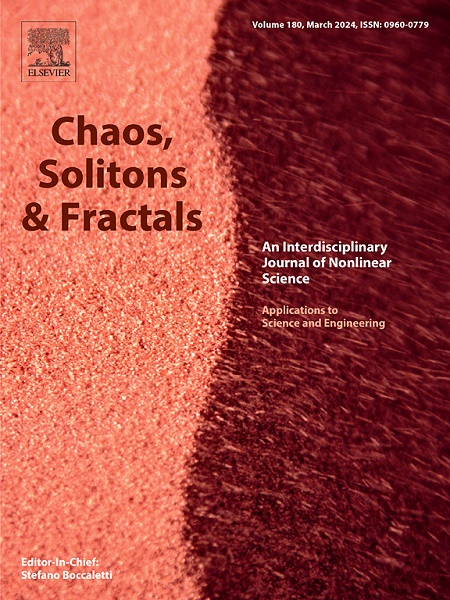分数阶流行病加权网络模型的动力学分析及其有限时间控制
IF 5.6
1区 数学
Q1 MATHEMATICS, INTERDISCIPLINARY APPLICATIONS
引用次数: 0
摘要
传染病对全世界的公共卫生构成重大威胁,往往造成严重的社会和经济损失。有必要提出一种有效的控制方法来帮助这种疾病迅速消灭。考虑到节点间的权重代表了人与人之间的亲密关系,而亲密关系严重影响疾病的传播,提出了一种基于加权网络的分数阶流行病模型。应用分数阶李雅普诺夫稳定性理论,对系统平衡点的稳定性进行了严密的分析。在此基础上,提出了一种适用于传染病管理的有限时间控制器。有限时间控制有助于在短时间内迅速降低感染率,从而成为应对突发疫情的有力工具。这一控制策略不仅大大减轻了疫情对社会经济的不利影响,而且加快了系统的响应时间,使控制措施能够更快地适应疫情的动态变化。最后,通过仿真验证了理论结果的有效性。本文章由计算机程序翻译,如有差异,请以英文原文为准。
Dynamical analysis of a fractional-order epidemic weighted network model and its finite-time control
Infectious diseases pose a major threat to public health worldwide, often leading to serious social and economic damage. It is necessary to propose an effective control method to help the disease die out quickly. Given that the weight between nodes represents the intimacy of people, which seriously affects the spread of diseases, a fractional-order epidemic model based on weighted networks is proposed. The stability properties of the system’s equilibrium points are rigorously analyzed through the application of fractional-order Lyapunov stability theory. Furthermore, a finite-time controller is proposed for application in infectious disease management. Finite-time control facilitates rapid reduction of infection rates over short durations, thereby offering a potent instrument for responding to abrupt outbreaks. This control strategy not only substantially mitigates the adverse socioeconomic impacts of the epidemic but also expedites the system’s response time, enabling control measures to more rapidly adapt to the dynamic changes in the epidemic. Finally, the validity of theoretical results is verified by simulation.
求助全文
通过发布文献求助,成功后即可免费获取论文全文。
去求助
来源期刊

Chaos Solitons & Fractals
物理-数学跨学科应用
CiteScore
13.20
自引率
10.30%
发文量
1087
审稿时长
9 months
期刊介绍:
Chaos, Solitons & Fractals strives to establish itself as a premier journal in the interdisciplinary realm of Nonlinear Science, Non-equilibrium, and Complex Phenomena. It welcomes submissions covering a broad spectrum of topics within this field, including dynamics, non-equilibrium processes in physics, chemistry, and geophysics, complex matter and networks, mathematical models, computational biology, applications to quantum and mesoscopic phenomena, fluctuations and random processes, self-organization, and social phenomena.
 求助内容:
求助内容: 应助结果提醒方式:
应助结果提醒方式:


